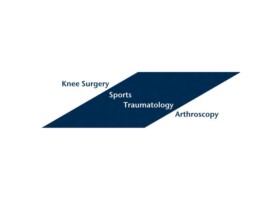
Authors:
Ulrich J. Spiegl, Sean D. Smith, Simon A. Euler, Peter J. Millett, Coen A. Wijdicks
Abstract:
Studies have shown excellent results after subpectoral biceps tenodesis for the treatment of disorders of the long head of the biceps (LHB). While reported com- plications are low with subpectoral tenodesis, there have been reported failures clinically with loss of fixation and the development of a Popeye deformity. The senior surgeon (P.J.M.) has observed cases where the fixation screw and LHB tendon remained attached to the proximal humerus but there appeared to be a failure distal to the initial tenodesis site.
Several studies have described the fixation strength of the biceps tenodesis construct using interference screws, suture anchors or other fixation devices. However, no study has investigated the effect of the stitch location on suture–tendon construct strength. The musculotendinous junction of the LHB, which is defined as the region between the proximal tendinous region and distal muscle belly, consisting of both tendon and muscle tissue, was reported to be 2 cm from the superior boarder and about 3 cm proximal from the inferior border of the pectoralis major tendon. Based on the close anatomic relationship between the musculotendinous junction and the subpectoral region, incorporation of the musculotendinous junction in the tenodesis stitching during subpectoral biceps tenodesis is a reasonable surgical option. Understanding the effect of stitch location on the time zero suture–tendon construct strength is useful information clinically, as the stitch location can be adjusted intra- operatively to improve construct strength.
The purpose of this study was to determine the effect of stitch location on the ultimate failure strength of the suture– tendon interface for biceps tenodesis. Placing the stitch at the musculotendinous junction was hypothesized to result in a significantly weaker repair than stitching in the tendon only.
For the complete study: Biomechanical consequences of proximal biceps tenodesis stitch location: musculotendinous junction versus tendon only
